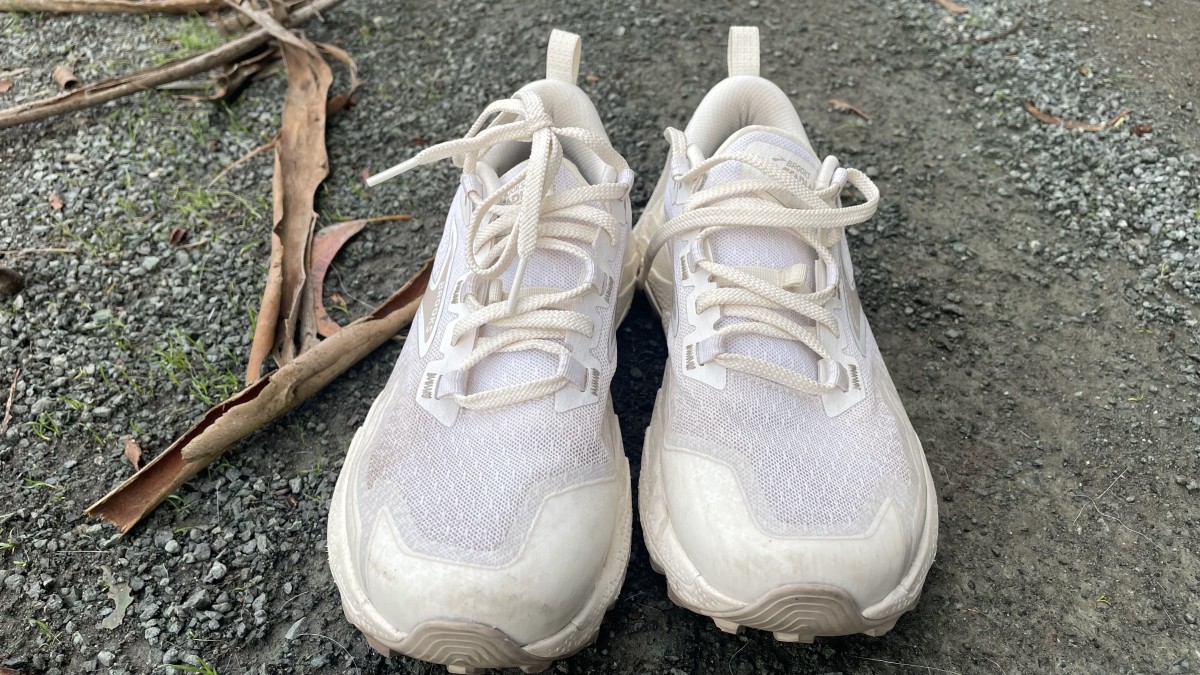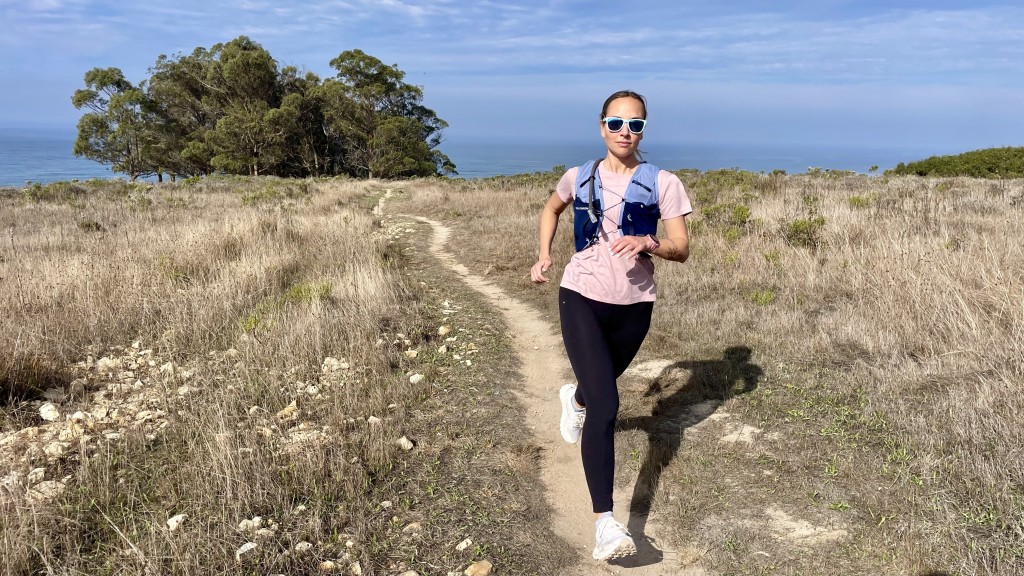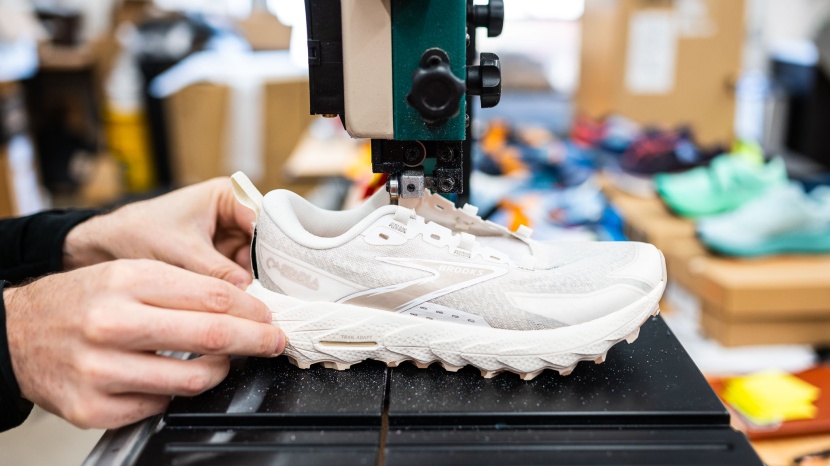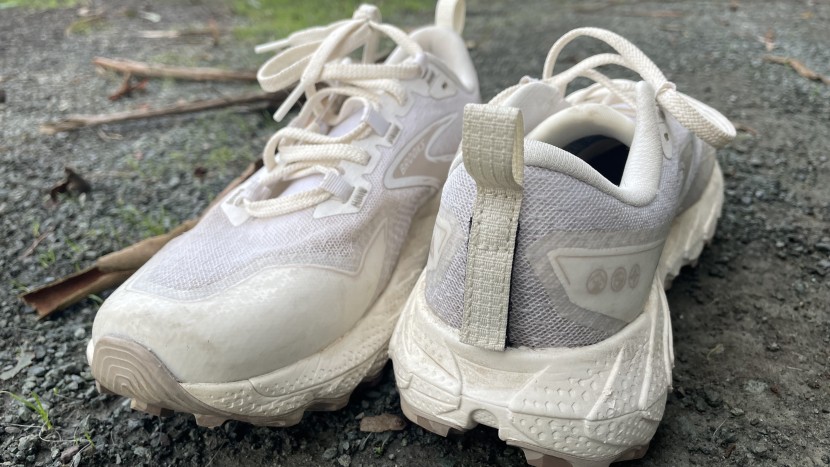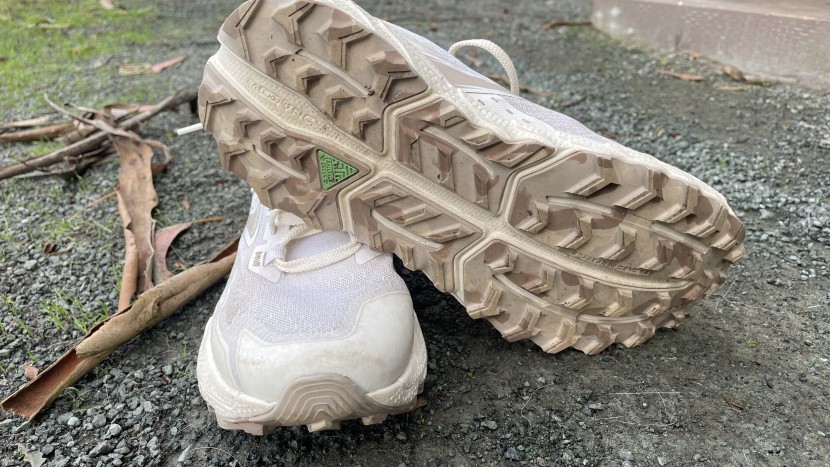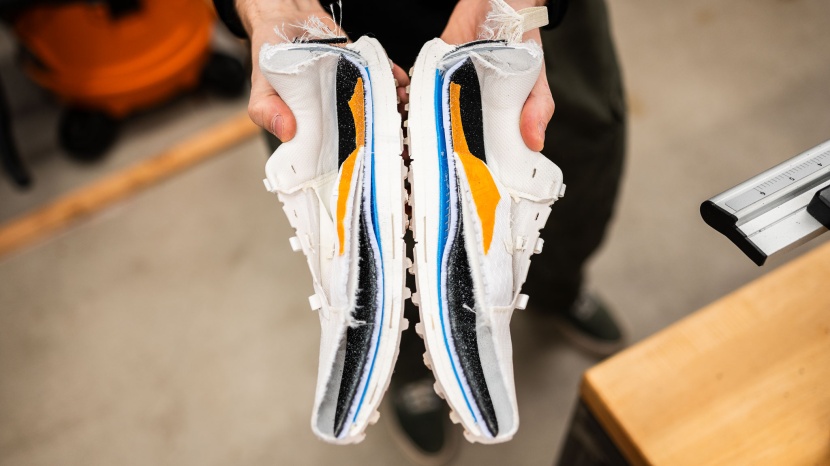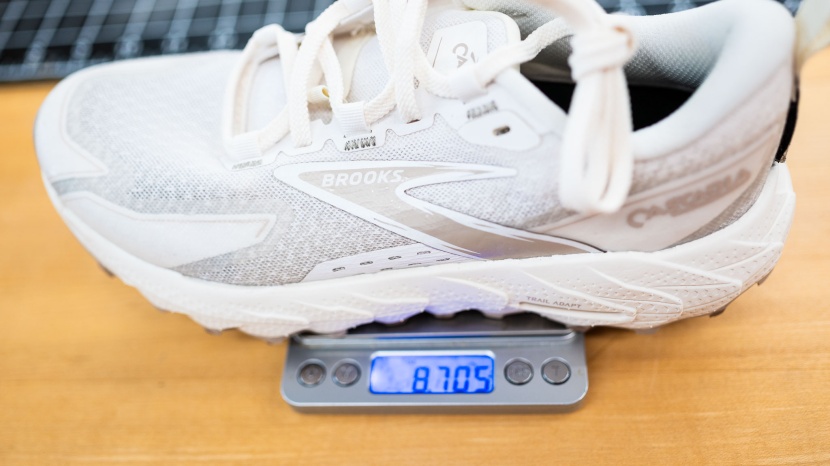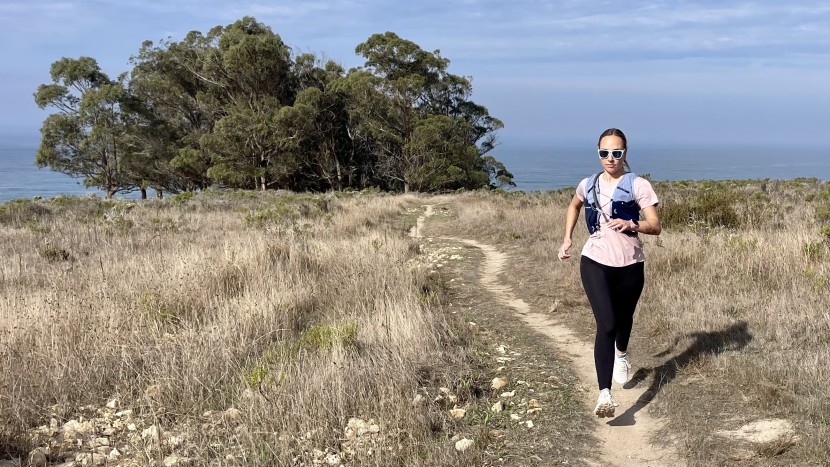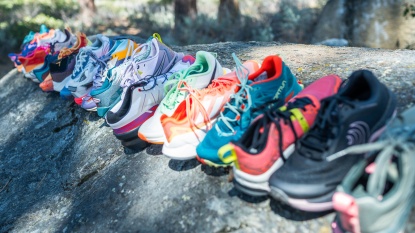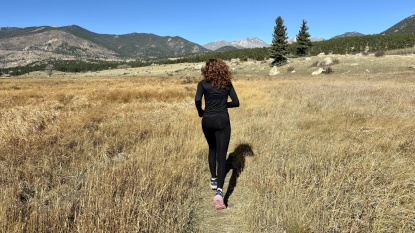Brooks Cascadia 18 - Women's Review

Our Verdict
Our Analysis and Test Results
Though not the lightest shoe at nearly 9 ounces per women's size 6.5, this 7 mm drop shoe offers a comfortable ground feel, a more minimal upper, and bitey lugs at a budget-friendly price.
Comfort and Fit
I think the updates to the Cascadia are the best in this category, hands down. While the fit is true to size and neutral, the comfort elements have been dramatically improved. The breathable upper feels liberating, and the precisely-placed cushion makes this shoe a contender for long-distance ventures. While not a plush shoe at all, its dense midsole and comfortable heel remain comfortable on longer runs.
When we nervously ventured out on an inaugural 14-mile run in the Cascadia, we were satisfied with its performance and comfort. The midsole doesn't offer much bounce, so we would recommend the Cascadia to moderate runners and hikers. Runners who want plush comfort will find this shoe to be a bit rigid and minimal, but runners needing an affordable trail shoe with enough comfort to inspire longer distances will be satisfied with the Cascadia.
Stability
The low-to-the-ground feel and stability plate make the Cascadia a notably stable trail runner. It doesn't have a ton of lateral structure to aid in this, but the adaptive plate functions as it should to help keep runners upright and running well.
Much like many Hoka-made shoes, the Cascadia almost suctions your heel down into its heel cup, which feels more stable than shoes where your foot seemingly rides atop the heel cup. The beefy heel collar helps secure feet, working in tandem with the plate. Even with a more traditional 7 mm drop, the Cascadia provides noteworthy stability for runners in need of this feature.
Traction
The overall design of the Cascadia 18 is more minimalist than previous versions, yet Brooks preserved its reliable, rugged traction. Sharp 3.4 mm lugs allow the outsole to bite easily into the trail, offering a ride that feels equally at home running or hiking. Its traction is both sticky and aggressive, providing confidence even if it isn't the most extreme on the market.
Despite the inclusion of a rock plate, the Cascadia maintains surprising sensitivity thanks to its flatter profile and low forefoot, which keeps the foot closer to the ground. By avoiding the exaggerated rocker of speed-focused shoes, it delivers a balanced ride with better trail feedback than most highly protective models, increasing its overall traction on the trails.
Foot Protection
Earlier versions of the Cascadia were bulky and overly protective, but this latest iteration strikes a balance, offering sufficient protection while being versatile enough for various terrains. The adaptive plate doubles as a protective underfoot element, protecting your soles from harsh terrain. With only a 24 mm stack in the forefoot, the Cascadia doesn't offer the most robust underfoot protection. Paired with a 31 mm heel stack, this shoe provides better protection in the rear, making it an option best suited for heel strikers.
The upper textile is highly breathable but lacks the thickness needed to repel moisture. However, runners in warm, dry climates will appreciate the forefoot design for its exceptional ventilation. The toe bumper has been stripped back and is now more similar to the popular lamination-style toe caps. It provides some protection, but not the most. The heel collar is thick, padded, and finished with a velcro gaiter trap for attaching additional protection.
Weight
The Cascadia is definitely on the chunkier side when it comes to trail running shoes. At 8.71 ounces per women's size 6.5, it weighs in at the heavier end of the spectrum. While it isn't clunky in its ride thanks to its comfortable weight distribution, the weight of the Cascadia is a bit much for runners who want a streamlined trail running experience. Ultimately, the weight of this shoe isn't a total dealbreaker, but we certainly wish it was lighter.
Should You Buy the Brooks Cascadia 18?
The Cascadia 18 has much more to offer than previous versions. This is not a case where it would be appropriate to purchase an older model to save some cash. Runners who want a minimally structured shoe that can double as a hiker will appreciate the new and improved Cascadia. While not an overall showstopper, the Cascadia holds its own amid a sea of trail runners, especially considering its more comfortable price point. It offers solid traction and a comfortable enough body to make many runners happy. While we have other shoes that I would recommend over the Cascadia, it is far from the worst in our lineup this season.
What Other Trail Running Shoes Should You Consider?
The Brooks Divide 5 is the most notable comparison when it comes to the Cascadia. The Divide has been a long-standing, budget-friendly, high-value model thanks to its approachable price and user-friendly design. Even still, the Divide costs a bit less and offers easy, neutral comfort for moderate trail runners. The Divide has slightly less serious traction, but from a comfort standpoint, it is slightly superior. For easy wearing without an overbuilt design, the Hoka Mafate Speed 4 is an awesome contender. The Mafate offers comfort with some responsiveness and capable traction. If the Mafate's price is a bit intimidating, the Hoka Torrent 4 offers similar characteristics for a lower price.


